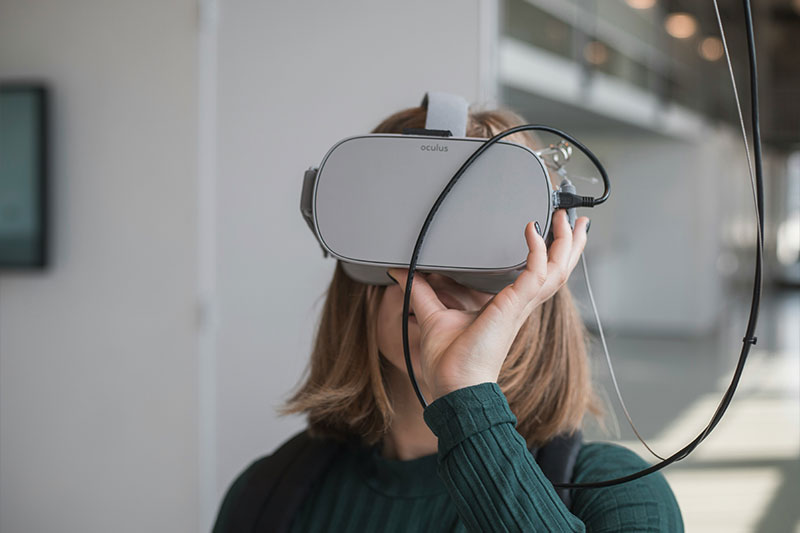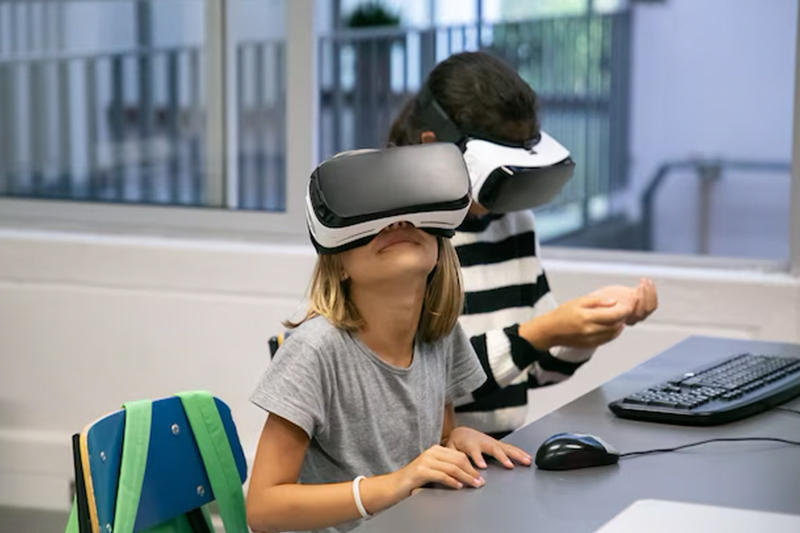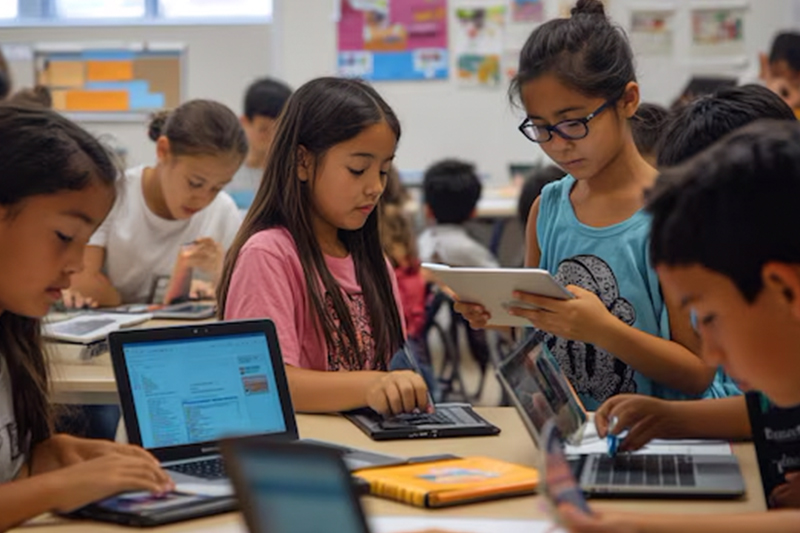Education is at a crossroads. The traditional systems many of us grew up with are no longer adequate to meet the needs of a fast-evolving, technology-driven world. As someone who has spent significant time working in both the tech and educational fields, I’ve seen firsthand the challenges students and educators face. From outdated curricula to unequal access to resources, it’s clear change isn’t just necessary—it’s urgent. Fortunately, cutting-edge technologies such as Artificial Intelligence (AI), Augmented Reality (AR), and Virtual Reality (VR) now are accessible and powerful tools able to transform education. They can help bridge gaps, make learning more engaging, and equip students with the skills they’ll need for a future where adaptability is key.
Current Challenges in the Education System
The modern education system struggles with outdated teaching methods, which often fail to address the diverse needs of students. Standardised tests, rigid curriculums, and one-size-fits-all teaching approaches can stifle creativity, limit critical thinking, and fail to prepare students for the real world. Research from the World Economic Forum underscores the urgency of the situation: over half of the workforce will need to reskill by 2025 to keep up with technological advancements. This statistic highlights the gap between what students are learning today and what they will need to succeed in the near future. Our current system is not preparing students for the rapidly changing demands of the workforce, so it’s time to rethink our approach to education.
The Power of AI, AR, and VR in Education
The integration of AI, AR, and VR into education has the potential to revolutionise how we teach and learn. These technologies provide personalised, immersive, and interactive learning experiences that can meet students where they are, making education more dynamic and engaging.
- AI in Education: AI has the ability to personalise learning for each student, offering tailored lessons based on their unique learning style, pace, and progress. Platforms like Knewton and DreamBox Learning use AI algorithms to adapt in real-time, ensuring that students get the right content at the right time. This individualisation helps students master concepts at their own pace, making education more inclusive and effective.
- AR in Classrooms: Augmented Reality adds a new dimension to learning by overlaying virtual elements onto the physical world. AR applications like Google Expeditions allow students to explore historical sites, dive into space, or interact with 3D models of the human body—all from the classroom. These immersive experiences make abstract concepts more tangible and drive deeper understanding.
- VR for Experiential Learning: Virtual Reality takes immersive learning to another level by allowing students to experience scenarios that would be impossible in the real world. VR can simulate everything from dissections to chemistry experiments, providing hands-on learning in a safe, controlled environment. For example, Oculus Educational Experiences lets students engage in virtual dissections or explore distant planets, making complex scientific concepts come to life.
Benefits and Potential Drawbacks
The benefits of incorporating AI, AR, and VR into education are undeniable. These technologies can enhance student engagement, improve retention, and provide learners with a more interactive learning environment. A recent study found that VR learners retained information four times better than those taught with traditionally theoretical activities, thanks to the immersive nature of the technology. By bringing lessons to life, AI, AR, and VR can make learning more memorable and also enjoyable.
However, there are challenges to widespread adoption as the cost of implementing these technologies can be prohibitive, especially for underfunded schools. Teachers also need specialised training to effectively integrate these tools into their pedagogy, and many educational institutions lack the necessary digital infrastructure. Additionally, there’s the risk of exacerbating the digital divide, where students from lower-income backgrounds may be left behind if they don’t have access to these technologies at home or school.
Successful Integration of Technology in Education
Despite these challenges, many educational institutions have successfully integrated these advances into their curricula, demonstrating their potential to enhance learning outcomes. For instance, the University of Illinois has created immersive VR environments for medical students, allowing them to practise surgical procedures in a safe, controlled setting. The results have been impressive, with students gaining hands-on experience that would be difficult or impossible to replicate in a traditional classroom.
In Singapore, the AI Learning Lab has been using AI analytics to create personalised learning experiences for students, significantly improving engagement and academic performance. Both examples show that when implemented thoughtfully, AI, AR, and VR can provide transformative benefits for both students and educators.
The Evolving Role of Educators in a Technology-Driven Environment
As technology reshapes education, the role of educators will also evolve. Teachers will no longer be mere dispensers of information but instead will become facilitators of personalised learning journeys. Their focus will shift to guiding students through customised learning paths, made possible by AI, AR, and VR. Such a transition will require significant investment in professional development to ensure educators are equipped with the skills to use these tools effectively.
Educators will also need to adopt a growth mindset, embracing the continuous learning that comes with technological change. As AI, AR, and VR continue to evolve, teachers will need to stay up-to-date on the latest developments and innovations to provide the best learning experiences for their students. And while this will be confronting and challenging for some educators who may fear moving away from traditional teaching, it will be necessary.
Addressing Digital Equity and Access Concerns
While emerging technologies have the potential to revolutionise education, we must also address the issue of digital equity. The digital divide, which disproportionately affects students from disadvantaged backgrounds, remains a significant barrier to technology adoption. To ensure all students can benefit from AI, AR, and VR, policymakers and educators must work together to provide equal access to digital resources.
This means investing in infrastructure, such as high-speed internet and digital devices, and ensuring all students have the tools needed to succeed in a technology-driven world. Without such investments, the promise of AI, AR, and VR in education will remain out of reach for many students.
Future Projections for Education and Lifelong Learning
Looking ahead, the integration of AI, AR, and VR in education will only become more prevalent. As technology continues to advance, lifelong learning will become the norm. A study by McKinsey & Company predicts that 87 million jobs could be automated by 2030, making continuous learning and upskilling essential for workers to remain competitive in the job market.
Educational institutions will need to adapt to this new reality by offering flexible, tech-driven learning opportunities that prepare students for the challenges and realities of the future. This shift will need educators, policymakers, and industry leaders to collaboratively create a system that supports lifelong learning and career adaptability.
Recommendations for Policymakers, Educators, and Institutions
To fully harness the power of AI, AR, and VR in education, the following steps should be prioritised:
- Invest in technology infrastructure to ensure that all students have access to the digital resources they need, regardless of their socioeconomic background.
- Provide professional development for educators and offer training programs that help teachers integrate technology into their pedagogy and make the most of AI, AR, and VR in the classroom.
- Foster collaboration by encouraging partnerships between educational institutions, technology companies, and policymakers to develop innovative solutions that address the unique learning needs of different communities.
- Promote digital literacy and critical thinking to equip students with the skills needed to navigate a technology-driven world, including digital literacy, problem-solving, and critical thinking.
The future of education lies in the integration of AI, AR, and VR because these technologies have the potential to finally create a more inclusive, engaging, and effective learning environment that meets the needs of all students. However, realising this potential will require us to address the challenges of access, infrastructure, and teacher training. By taking bold steps to embrace these innovations, we can transform education and prepare future generations for a world that demands creativity, adaptability, and lifelong learning.






